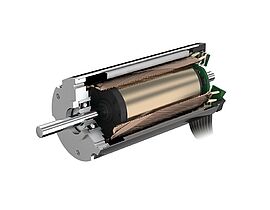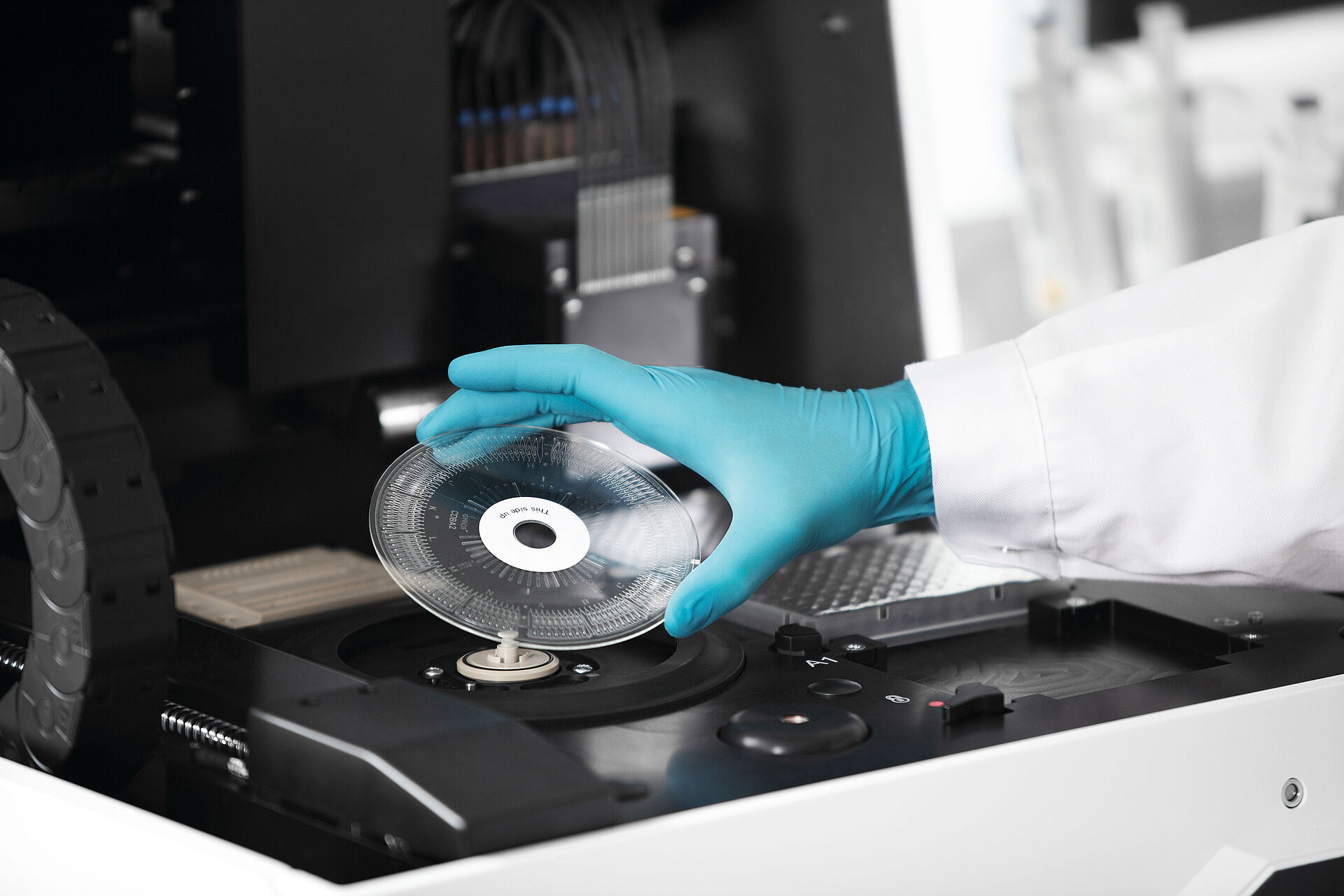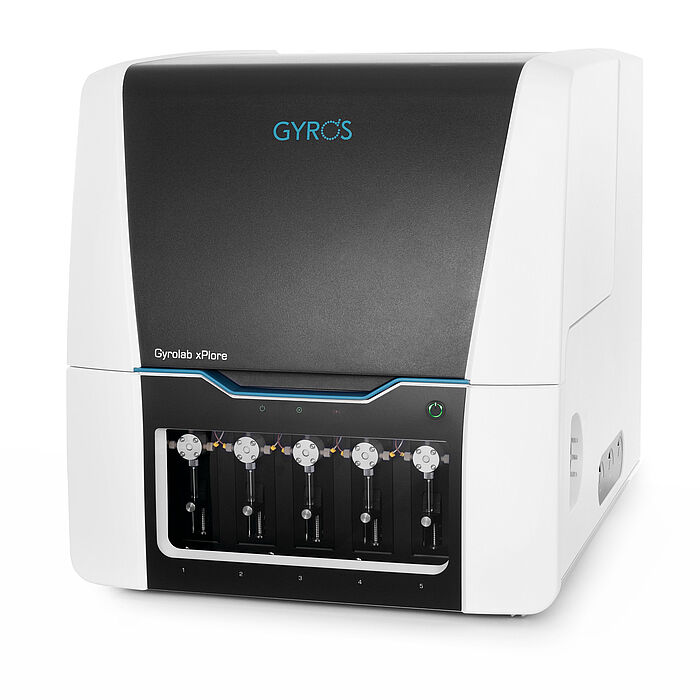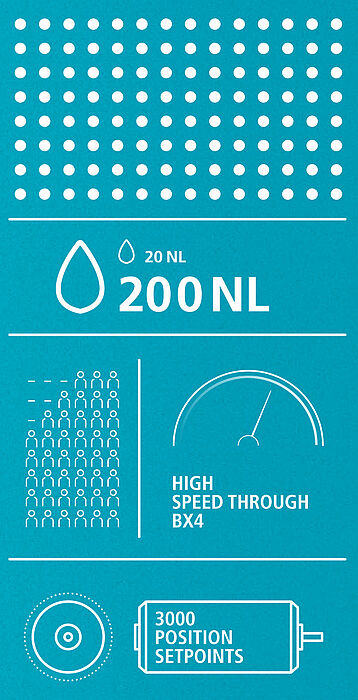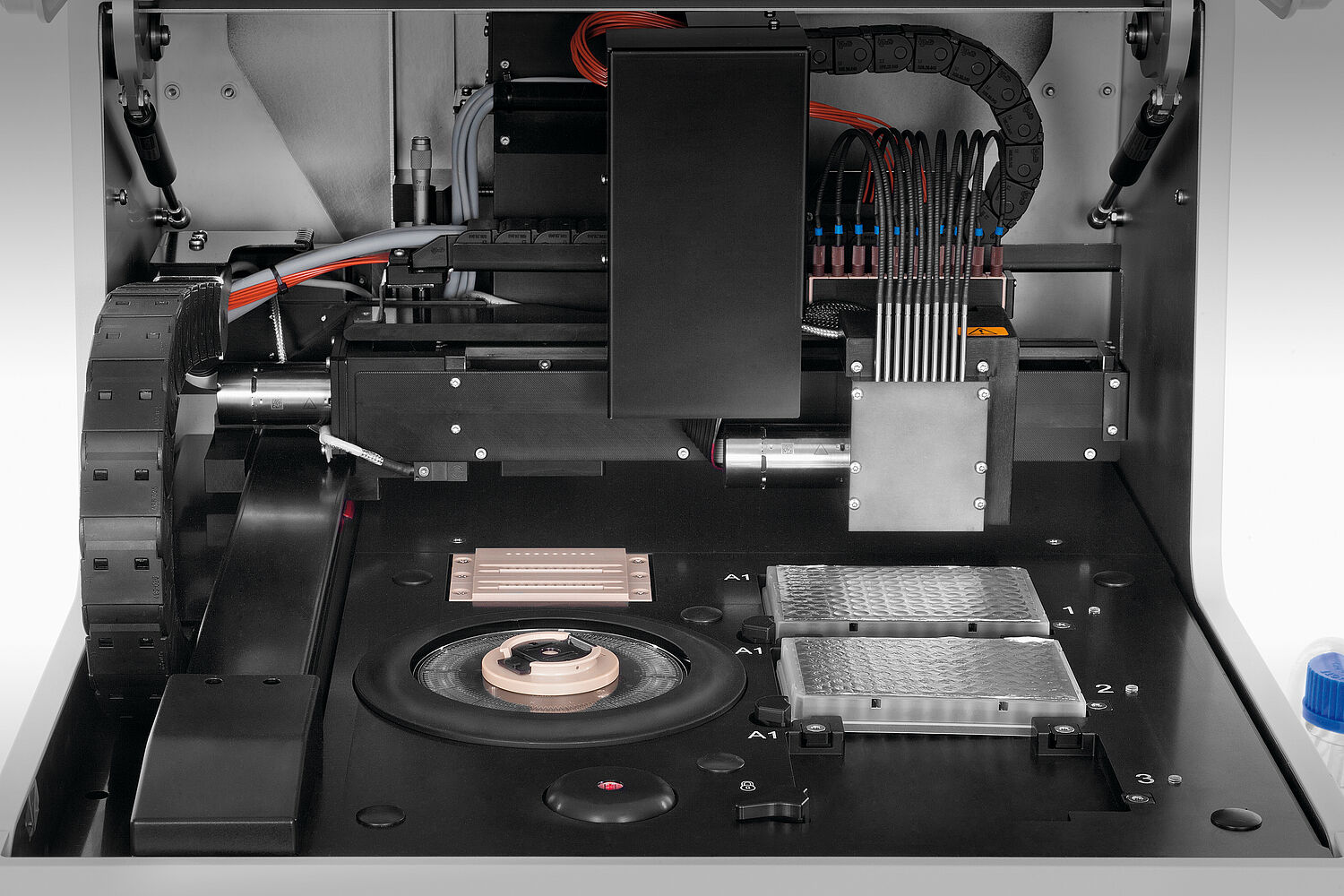If you saw Gyrolab xPlore in an office, you would probably take it for a large laser printer. However, lifting the cover reveals a miniature laboratory. A plastic disk, the size of a compact disk, is located at the heart of the device – this is where the samples are analysed. This CD contains a system made up of channels, each with a diameter of less than one millimetre. Capillary and centrifugal forces transport the samples through the channel system, analysing them in the process.
Biological agents as weapon against cancer
The majority of our customers are pharmaceutical companies," explains Maria Hjortsmark, Head of Marketing at Gyros. The companies use the system to test their biologicals. Biologicals are molecules which are too large and complex to be created synthetically. This is why they are produced by living – usually genetically engineered – cells, which are cultivated in nutrient fluid in the laboratory. Most biologicals are proteins. Cancer researchers have been pinning their hopes on one type of protein in particular: antibodies. These molecules are produced by specialized cells of the immune system. They recognize and bind foreign proteins – for example of bacterial or viral origin - that enter the body during an infection. Thus, the pathogens can be eliminated or marked for degradation by phagocytes. The same principle can also be applied to fight cancer cells.
Detection on CD
Gyrolab xPlore can be used to analyse the new drug during any development phase – for example, in the cells' nutrient solution or in the blood of test animals and patients. Up to 112 data points can be generated in parallel using a single CD. Thanks to the CD microstructures, Gyrolab xPlore requires very low sample volumes and minimizes reagent consumption. The sample fluid is pipetted into the wells of a microtiter plate, which is then placed into the instrument. Inside, the samples are transferred onto the CD by a robotic arm. They are then introduced into the appropriate channels by a capillary force. Only a minute amount of sample fluid is needed for the test – between 20 and 200 nanolitres, depending on the CD type.
The exact volume of the sample liquid is measured on the CD itself. For this purpose, the channel expands to form a chamber, which is the right size for the required volume. There is a hydrophobic barrier at the lower end, which stops the liquid from flowing further into the channel. Next, the CD starts to rotate. The centrifugal force diverts the sample fluid, which is located above the chamber, through an overflow channel. Then, the rotational speed is increased so that the sample overcomes the hydrophobic barrier and moves into the next section.
The same principle is used to run wash cycles and add further reagents to the experiment. The entire test process is fully automatic – each individual step is controlled by the software included with the device. "Automation does not only reduce the amount of work, but it also minimizes the risk of errors," explains Maria Hjortsmark.
Speed for high throughput
Gyros launched Gyrolab xPlore in 2015. At that time, many companies were already working with the new device's big brother, Gyrolab™ xP workstation, which is able to analyse five CDs in one run. However companies with relatively low throughput rates and small departments of large pharmaceutical companies often found the device a little too large. With Gyrolab xPlore, Gyros now brings these customers a tailored alternative.
When designing the new device, developers made sure that it matches its predecessor in analytical speed. The robot arm therefore has to be able to transport samples just as quickly and safely. Unfortunately, the extremely fast stepper motors which move Gyrolab xP's robotic arm were no longerbeing produced. The search for an alternative led Gyros to Compotech Provider AB. "The motors must be very fast without compromising the torque. This is why we decided to replace the stepper motors with powerful servomotors," explains Compotech's Pelle Almgren. The model finally selected was FAULHABER's BX4 series brushless DC motor with 4-pole technology and high torque. The motors are equipped with incremental encoders and, thanks to their compact design, are just a little larger than the stepper motor used in the previous model. Another advantage is their excellent price-performance ratio.
Gyrolab xPlore contains three brushless dc motors from the BX4 series, two of which have been mounted on a linear table. They move the robotic arm horizontally to transfer the samples and control the laser's movements during analysis. The third motor has a planetary gear box, which lifts and lowers the pipetting head. The high-precision control electronics with more than 3,000 position set points and low torque ripple ensure that the samples are positioned accurately on the CD, directly at the inlet of the respective channel. Equipped with BX4 motors, the Gyrolab xPlore also meets the speed requirements: "Generating 112 data points takes less than an hour," reports Maria Hjortsmark.
Binding according to the lock and key model
The special binding characteristics between an antibody and its target protein – the so-called antigen – are utilized to detect the active component. Similar to the lock and key model, antigen and antibody bind very specifically: they invariably recognize each other even among millions of other molecules. To determine the concentration of an antibody, for example, in sample fluids, its antigen is closely bound to a short section of the CD's channel wall. When the antibody passes the antigen in the channel, it is extracted by the antigen and retained in the channel. Following the same principle, a second antibody, which is marked with a fluorescence dye, subsequently binds to the first one. The dye is then excited by a laser. Detection of the emitted light is used to determine the concentration of the protein within the sample – in this case, the antibody.
Products
